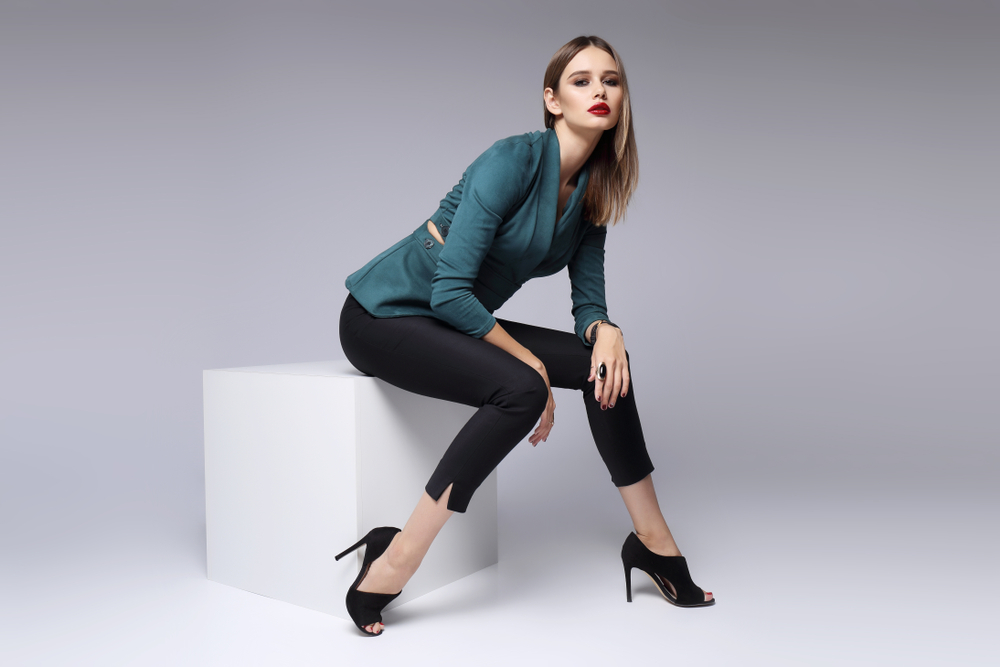
In the world of fashion photography, the art of modeling is an essential element that brings life and character to every photoshoot. Models are not just mere mannequins; they are the storytellers who can convey emotions, moods, and concepts through their poses and expressions. Behind every stunning photograph, there is a delicate balance of artistry and meticulous planning, which unveils the secrets behind the runway. In this article, we will delve into the fascinating world of modelling , exploring the tricks of the trade, the science behind the poses, and the synergy between the models and the photographers.
The Role of a Model: A Living Canvas
Models are the individuals who breathe life into fashion. They are the embodiment of style, grace, and confidence conveying the designer's vision to the world through their movements and expressions. Their mesmeric presence enables ordinary garments to transcend into extraordinary creations, allowing consumers to envision themselves wearing these fashion pieces.
Just like an artist with a blank canvas, models serve as the living canvas for photographers, who skillfully capture their essence and project it onto the image. Each model brings their unique interpretation to the clothes they wear, infusing the photograph with their own personality and energy. It is this symbiotic relationship between the model and the photographer that creates captivating fashion imagery.
The Science behind the Poses: Lines, Angles, and Proprioception
Modeling is more than just striking a pose; it is a delicate art form that involves understanding the principles of body movement, lines, angles, and the science of proprioception. Proprioception refers to the body's ability to perceive its position in space and control its movements.
Models must possess a keen awareness of their bodies to achieve the perfect pose. They must understand how to elongate their limbs, create captivating lines with their body, and manipulate angles to flatter the garments they are showcasing. By skillfully utilizing their proprioception, models can create visually striking poses that draw the viewer's attention and highlight the fashion being showcased.
The Secrets of the Runway: Confidence and Posing Techniques
Walking down the runway is a pivotal moment for every model. It is the culmination of weeks, or even months, of preparation, training, and honing their craft. Confidence is paramount to success on the runway, as models must exude poise, elegance, and an unwavering belief in themselves and the garments they wear.
Posing on the runway requires an understanding of the garments' construction and how they should be presented to achieve maximum impact. Models must master techniques such as the "three-point" pose, wherein they distribute the weight evenly on both legs and create shape and movement through their arms and torso. The ability to effortlessly transition between poses, change facial expressions, and engage with the audience is what sets the runway professionals apart.
The Synergy Between Model and Photographer: A Dance of Creativity
In every photoshoot, the collaboration between the model and the photographer is vital to capturing the vision and aesthetic of the fashion brand. Models must be receptive to the photographer's direction, adapting their poses and expressions to create the desired mood and narrative.
Photographers, on the other hand, must create a comfortable and supportive environment for models to thrive. They must possess an understanding of the art of modeling, knowing when to click the shutter to capture that perfect moment. Communication, trust, and a shared creative vision are the pillars that allow the model-photographer partnership to flourish and produce breathtaking imagery.
Frequently Asked Questions:
Q1: How important is it for a model to have prior experience?
A1: Prior experience can be beneficial in terms of familiarity with posing techniques and understanding the industry. However, with the right guidance and determination, anyone can embark on a modeling career.
Q2: Do all models meet the stereotype of being tall and thin?
A2: The fashion industry is evolving, and diversity is becoming increasingly valued. While the height and body shape of models are still factors in certain niches, there is an increasing demand for models of all shapes, sizes, and backgrounds.
Q3: How do models prepare for a photoshoot?
A3: Models prepare for a photoshoot by practicing poses, working on their physique, and maintaining healthy lifestyles. They also research the brand and concept, ensuring they bring their best interpretation to the shoot.
Q4: What goes on behind the scenes at a fashion photoshoot?
A4: Behind the scenes, there is a team of makeup artists, hairstylists, wardrobe stylists, and creative directors working together to bring the photographer's vision to life. Models collaborate with these professionals to ensure a cohesive look.
Q5: Can anyone become a model, or do you need a specific look?
A5: The modeling industry is diverse, and there is room for various looks and styles. While certain niches may require specific features, there are opportunities for individuals with unique looks who align with specific brands or campaigns.
In conclusion, modeling is an enchanting blend of artistry and science, with models serving as the living canvases for fashion photographers. The art of posing and creating visually captivating lines and angles requires a deep understanding of body movement and proprioception. On the runway, confidence and mastery of posing techniques are essential, while in photoshoots, the partnership between the model and photographer creates a dance of creativity, resulting in stunning fashion imagery. Modeling is a craft that transcends stereotypes, embracing diversity and uniqueness, making it an exciting and inclusive industry to explore and pursue.
Other useful resources
- https://en.wikipedia.org/wiki/Category:Modeling_agencies
- https://en.wikipedia.org/wiki/Modeling_agency
- https://www.planetmodelphoto.com/models/modeling/usa/charlotte/nc-north-carolina
- https://en.wikipedia.org/wiki/Category:Models_by_modeling_agency